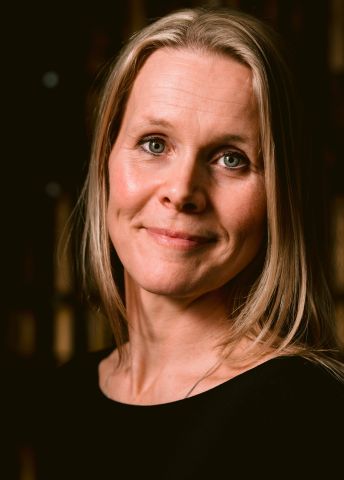
Johanna Rosén
Professor in materials physics
Wallenberg Scholar
Institution:
Linköping University
Research field:
Materials physics; thin films, nanolaminates, 2D materials, MXenes


Wallenberg Scholar
Institution:
Linköping University
Research field:
Materials physics; thin films, nanolaminates, 2D materials, MXenes
Many things have turned out differently than Rosén expected. Yet right now she is exactly where she wants to be.
“I never wanted to be a researcher – until I became one. But my whole life I’ve been curious and interested in exploring.”
She started out training to be a teacher, but enjoyed studying physics and mathematics so much that she continued on the physics program. Mainly by chance, she followed this with a PhD. She had met an inspiring researcher who agreed to be her supervisor. He was deeply committed to materials research, a field Johanna found to be only moderately interesting at first – but she soon caught the bug.
“I love having many irons in the fire. I want to perform simulations, create materials and test them. When I was studying for my PhD my supervisor told me I had to learn to delegate – you can’t do everything yourself just because it’s fun. And actually I don’t spend much time in the lab these days. I’m the linchpin, which is a luxury. I’m part of a team producing a load of findings, discussing them, and trying to understand them.”
As a professor at the Materials Design Division, Rosén is leading three teams. One consists of theoreticians, who are simulating materials and predicting their properties. The second team is made up of experimentalists, who create thin films and nanolaminates, and analyze them at atomic level. The third team is called “Applied Electrochemistry”, and carries out practical tests on the materials.
“Naturally, we send samples to other researchers around the world who are experts on different applications. But a small selection is tested here, the main potential uses being energy storage and catalysis. These are applications I prefer to have closer control over,” Rosén explains.
During the coronavirus pandemic she has been particularly pleased to have researchers at Linköping who can work on each stage in the chain, from theory to practical tests. Many labs in other countries have been shut down, but Rosén’s teams have been able to work more or less as usual.
“We now have a number of materials that didn’t even exist a few years ago that seem really promising. It’s so very gratifying to see that we have created something new that may actually work.”
“Researchers are really explorers. We don’t know what we’re going to find. Being a Wallenberg Scholar enables me to be that kind of explorer. The grant makes it possible to try out completely new ideas.”
There is much emphasis on ultrathin materials known as MXenes (pronounced maxenes). They are just a few atoms thick, with an outer layer of a transition metal and an intermediate layer of carbon atoms. The carbon and the large surface area of the material – one gram of MXene is the size of a soccer pitch – makes them potentially attractive as a means of energy storage and catalysis.
“Much remains to be explored when it comes to these substances. For instance, there are no magnetic MXenes, which I am keen to find. We also need to develop completely new methods so we can scale up fabrication of MXenes in a sustainable way.”
Environmental concerns are central to Rosén’s research. She considers that in a sense, everything boils down to the environment: materials are needed for everything all the time and they must be eco-friendly and energy-efficient if society is to function in the long term. Energy storage is required for the large-scale use of solar power and wind power. In that case, batteries of the future cannot be dependent on uncommon minerals mined in theaters of war. Catalysis of chemical processes must also be based on inexpensive, common, eco-friendly substances, which is often not the case at present. Pure scientific research is needed both to find new materials, and to scale up their manufacture.
When Rosén’s first child was born thirteen years ago, followed soon after by her second, other researchers said to her “Aha…is this the end of your research career..?”
She is now a professor and Wallenberg Scholar, and has five children. These days, no one asks the question.
“For me, it’s never been about having to choose. I’ve always wanted both a career and a family. It’s true you can never completely switch off from your work as a researcher, but I think that family life has given me perspective. Having a family has benefited me in my work. Besides, as everyone knows, even naturally efficient people become a whole lot more efficient once they have children…”
Rosén was one of the very first Wallenberg Academy Fellows back in 2012. It was to have a great impact in the following years.
“It was a prestigious award that raised the profile of my research and opened doors. It has benefited me in many ways that can’t be measured in money. And there were few strings attached to the funding, which gave me independence as a young researcher, and enabled me to try something new. It’s incredibly important to feel you can try something out despite the risk of failure.”
Text Lisa Kirsebom
Translation Maxwell Arding
Photo Anna Nilsen, Igor Zhirkov, Magnus Bergström